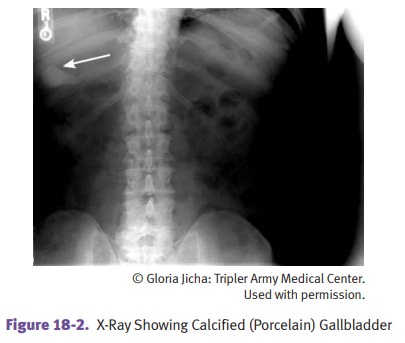Chapter: Pathology: Gallbladder and Biliary Tract Pathology
Biliary Tract Cancer
BILIARY TRACT CANCER
Gallbladder cancer is frequently asymptomatic
until late in the course. When the tumor does present, it may be
with cholecystitis, enlarged palpable gallbladder, or biliary tract obstruction
(uncommon). X-ray may show a calcified “porcelain gallbladder.”
Microscopically, the tissues show adenocarcinoma. The prognosis for gallbladder
cancer is poor; 5-year survival rate is ~12%.
Bile duct cancer. Bile duct carcinoma is
carcinoma of the extrahepatic bile ducts, while cholangiocarcinoma is carcinoma of the intrahepatic bile ducts. Klatskin tumor
is a carcinoma of the bifurcation of the right and left hepatic bile ducts.
Risk factors for bile duct cancer include Clonorchis
(Opisthorchis) sinensis (liver fluke) in Asia and primary sclerosing
cholangitis. Bile duct cancer typically presents with biliary tract
obstruction. Microscopic examination shows adenocarcinoma arising from the bile
duct epithelium. The prognosis is poor.
Adenocarcinoma of the ampulla of Vater may exhibit duodenal,
biliary, or pancreatic epithelium. Patients present
with painless jaundice. The 5-year survival rate is <50% in spite of
resection.

Related Topics